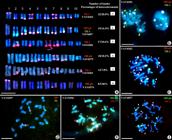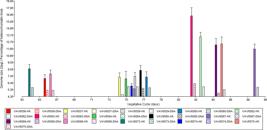Abstract
Variation in genome size and knob heterochromatin content was explored in relationship to altitudinal cline and length of the vegetative cycle in northern Argentina, USA and Mexico landraces. It was considering that the decrease in DNA and heterochromatin content could be an adaptation to a shorter growing season and the result of artificial selection by man. Guaraní landraces from Northeastern Argentina (NEA) show similar variation in genome size (3.81pg to 7.56pg) and knob heterochromatin content than maize growing across an altitudinal cline. The present analysis offers an overview of the genetic variability of NEA maize to explain why Guaraní landraces and those along an altitudinal cline share this similar variation. Karyotype and flow cytometry data were employed. The DNA content of Guaraní landraces which lacking B chromosomes, showed no significant relationship with knob heterochromatin, suggesting differences in the amount of interspersed DNA. A significant positive relationship was found between the length of the vegetative cycle and both number and percentage of knob heterochromatin. No significant correlation was found between genome size and vegetative cycle. All these results allow us to conclude that the variation in heterochromatin content among Guaraní maize is driven by the selection of farmers for flowering time.
Key words:
genome size; knob heterochromatin; length of vegetative cycle; repetitive sequence variation; selective effect

 Thumbnail
Thumbnail
 Thumbnail
Thumbnail

